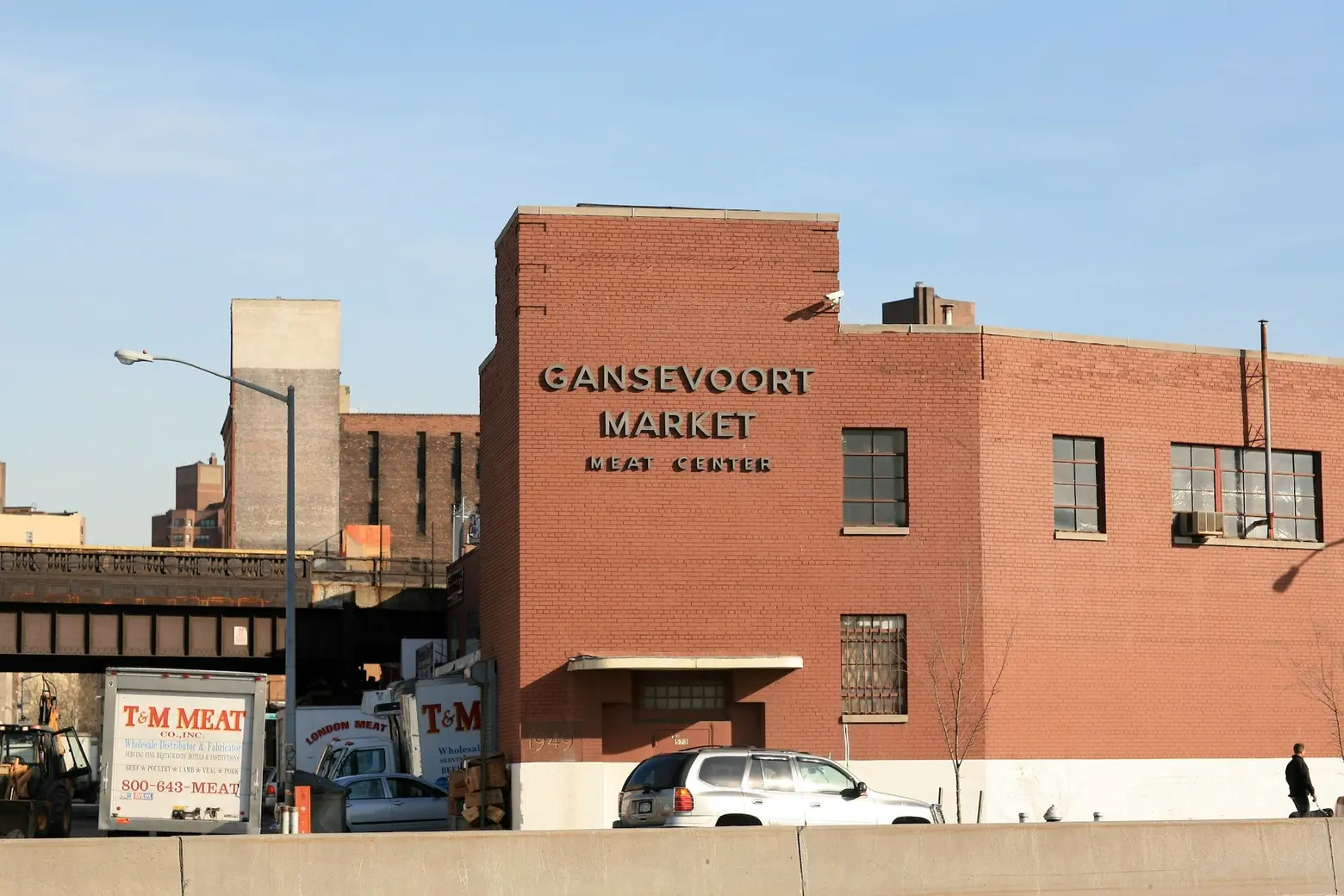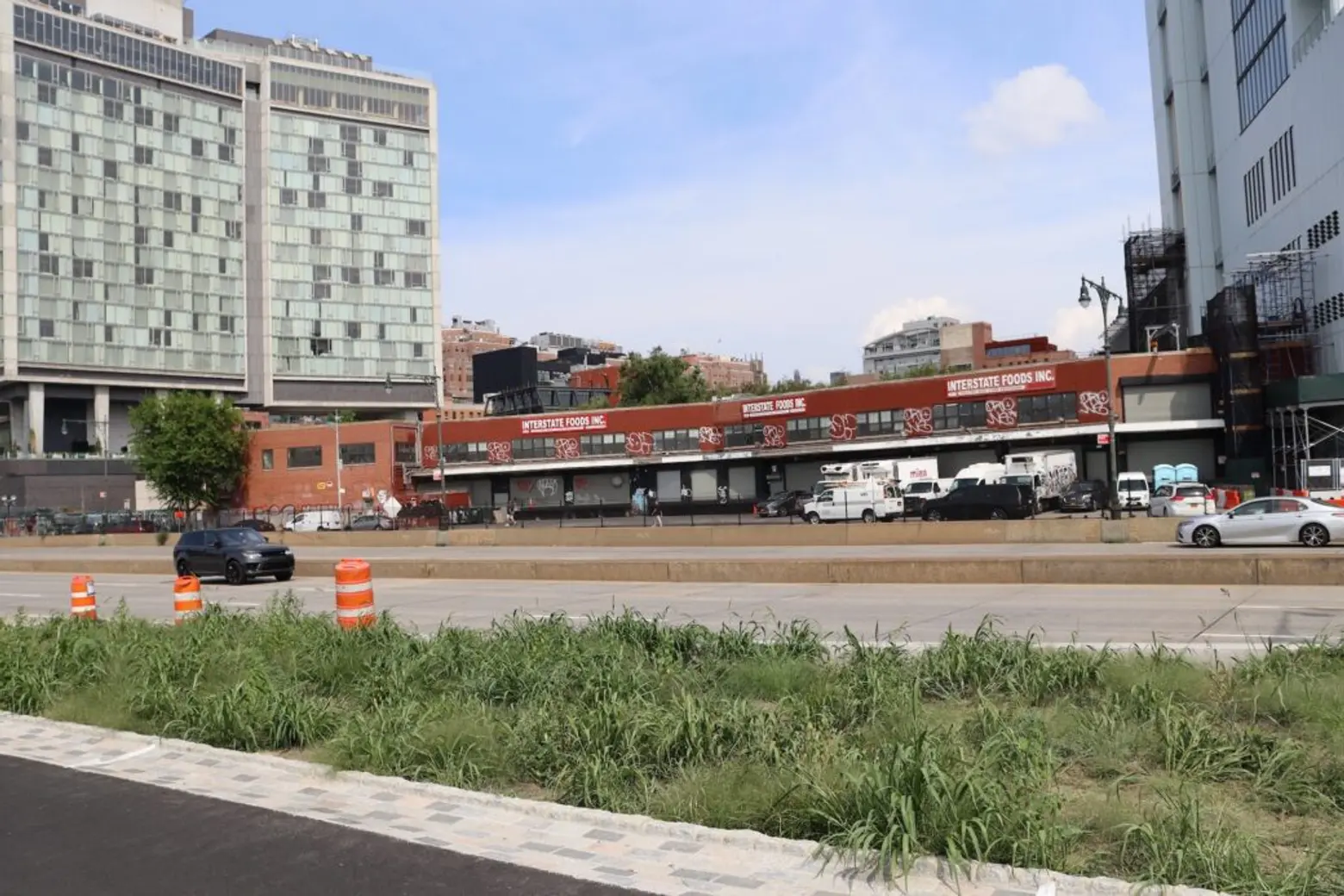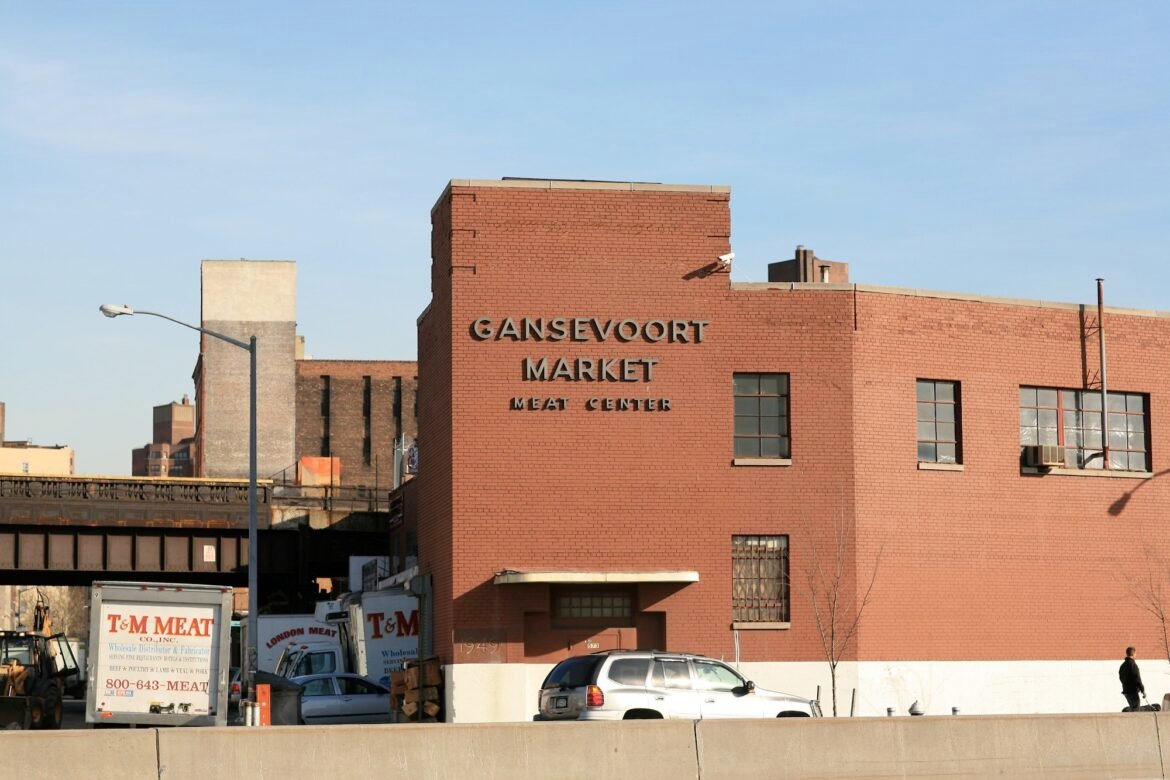
Mayor Eric Adams on Monday unveiled a proposal to replace a Manhattan meat market with a mixed-use development with 600 apartments. The vision, dubbed Gansevoort Square, involves partially building on the lot of the Gansevoort Market Co-Op at the corner of Little West 12th Street and 10th Avenue in the Meatpacking District. The project calls for 600 mixed-income housing units, 300 of which could be affordable, a new open pavilion, and a possible expansion of the Whitney Museum of American Art.

Announced by First Deputy Mayor Maria Torress Springer at the Association for a Better New York on Monday, Gansevoort Square includes a new 11,200-square-foot public open space and the opportunity for additional development on a 45,000-square-foot space, possibly for an expansion of the Whitney, which has a Right of First Offer on the meat market site, and potential new facilities for the High Line. The Whitney expansion could include new gallery and education spaces.
The affordable units would not need a public subsidy to be financed, according to the city.
“The new vision for Gansevoort Square is the type of exciting, forward-looking project our administration is known for and the exact kind of project we want our city to continue to dream up and deliver,” Torres-Springer said.
“In one area, we are delivering on much-needed affordable housing, creating more public space, and offering opportunities for two cultural icons to expand. This endeavor requires strong partnership amongst many stakeholders and is a multi-agency collaboration that shows government’s capacity to reinvent.”
As the New York Post reported, the last seven meatpackers in the Gansevoort Market Co-Op will move out ahead of the 2032 lease expiration as part of a deal with the city’s Economic Development Corporation. The meatpackers take up a 66,000-square-foot parcel owned by the city, between the Whitney and the Standard Hotel.
John Jobbagy, president of Gansevoort Market, said the opportunity “has come along at the right time” as technology and industry processing practices have changed.
“With technological advances, our industry processing practices have changed, and the market building does not meet up-to-date standards for processing and distribution,” Jobbagy said.
“For the last decade, we have been exploring options for new facilities and better ways of serving our customers. This opportunity has come along at the right time and meets our needs. Our city thrives on advancement and improvement — and we look forward to the creation of new housing for New Yorkers, new open space, and the potential for much more.”
The city said the community engagement process will begin with conversations with Council Member Erik Bottcher, Community Board 2, and local partners.
“The Whitney and the High Line are treasured institutions on the West Side, and I’m excited that they’re considering this opportunity,” Bottcher said. “I look forward to working with all stakeholders and the wider community to envision this site for cultural and park uses, along with the potential for much-needed affordable housing.”
The Gansevoort Square vision comes from recommendations made in the ‘New’ New York panel’s “Making New York for Everyone” plan, which was released in 2022 and includes 40 proposals that reimagine commercial districts into 24/7 destinations.
RELATED:

